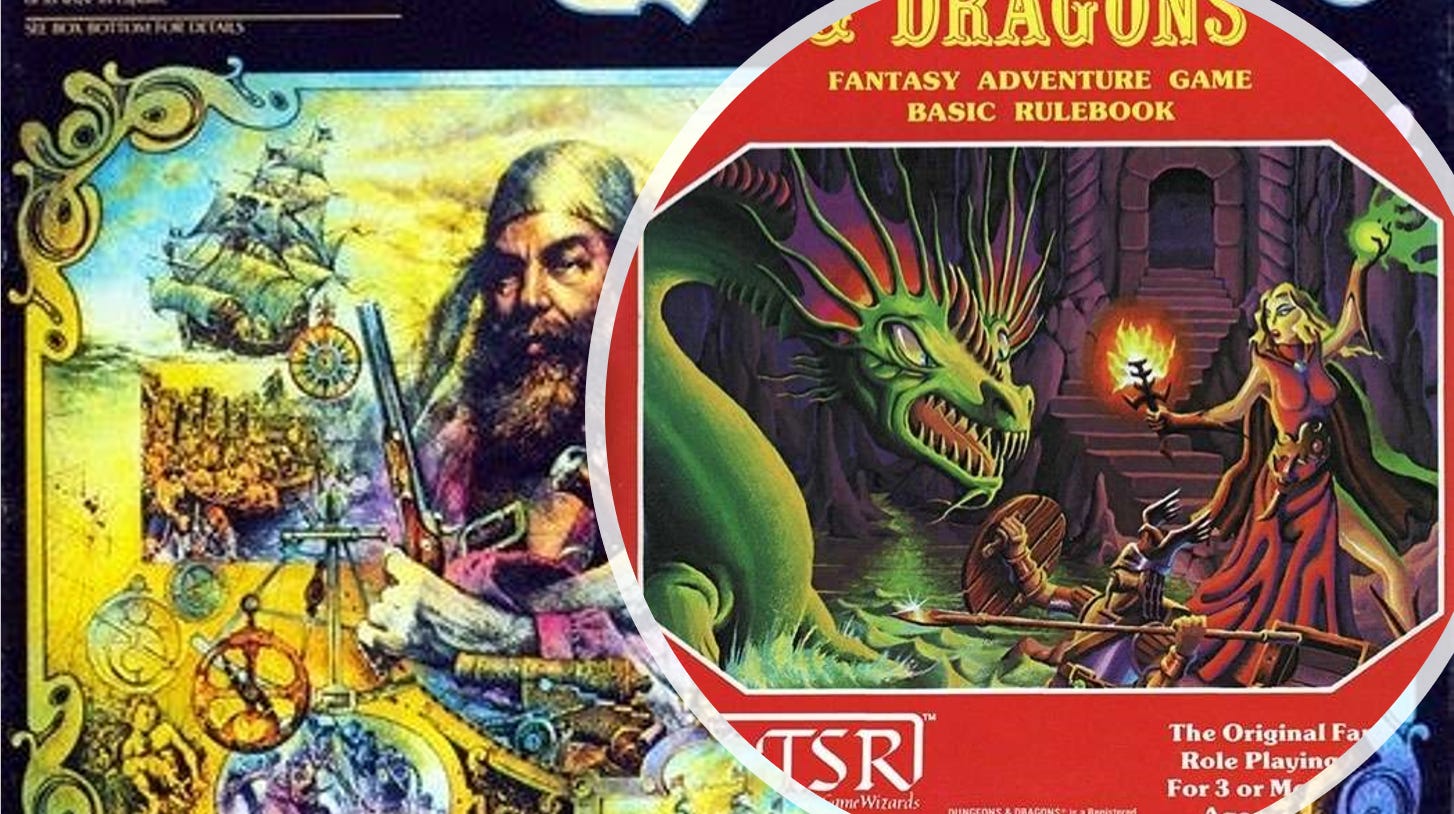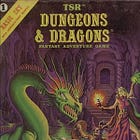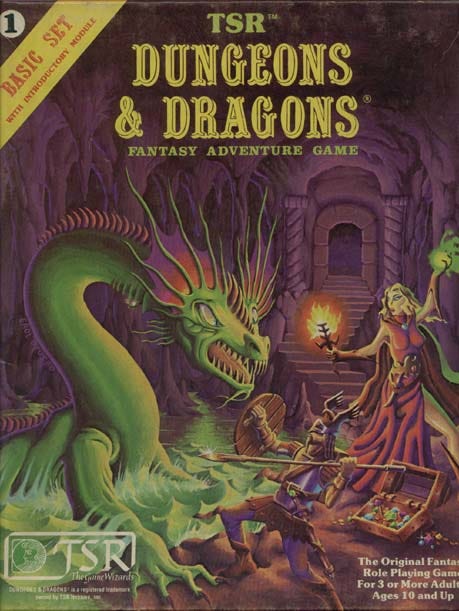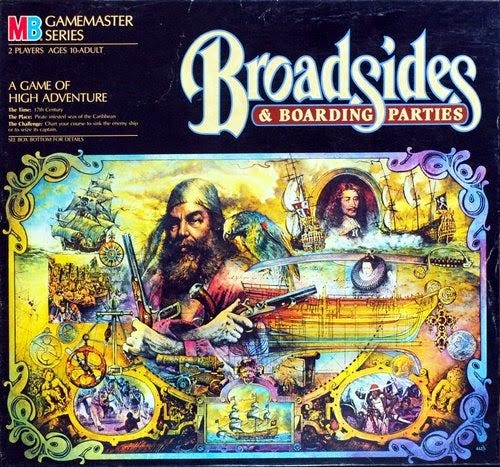Moving from Theatre of the Mind to Minis Via Boardgaming
I’ve been thinking a lot about my earliest days in the gaming hobby lately. There are a number of reasons for this, but I think the main one is the edition war surrounding the latest update to the Dungeons & Dragons rules. There are a lot of people online who have very strong opinions about this new edition, and based on my reading of the updates to the Monk class alone it’s a new edition (6e is what I’m calling it), and that reminds me of my experiences as a gamer who entered the hobby just as an edition war erupted.
I've been playing role playing games for a long time and most of the friends I have today are connected one way or another with game play. When you are no longer in college, or the dating scene, there are fewer and fewer ways to meet new people and make new friends. One of the best ways to meet people is to host games at a local game store or to post that you are running games in a social media group. Gaming provides a good foundation for building long term friendships because it lets you get to know people in a casual and pressure free environment. Certainly, as a parent there are other opportunities to make friends. Scouting and other Extracurriculars are great places to meet people, but those pale in comparison to gaming in my opinion.
I was first introduced to role playing games, and more specifically Dungeons & Dragons, by one of my dearest lifelong friends Sean McPhail. To be more specific, he and I were introduced to gaming by one of his older brothers. I have discussed my first gaming session on this newsletter before when writing about "Pants Issues." In that post, I used an image of the Tom Moldvay edited Basic Set to represent the version of Dungeons & Dragons that Sean and I "played" on that occasion, but that was not the actual version we played. It just happens to be my favorite edition.
To be honest, I have no idea what edition of Dungeons & Dragons we played that day. The DM never referenced a rulebook or module. The adventure was all in the DM’s mind and it was a very ad hoc experience. I honestly think that a lot of my negative feelings about “Theatre of the Mind” gaming are rooted in the way this DM was arbitrary and meanspirited and that there was no physical representation of play to make the experience more objective. In fairness, I think my experiences with being a Vampire the Masquerade Camarilla Storyteller have also shaped my negative feelings about “Theatre of the Mind” gaming, but those are stories for another time.
Thinking back about that first gaming session though, I remember it started when someone asked the DM to run a game and wondered if he needed any books. He responded that he didn’t and had memorized the rules. That should have clued everyone in that he wasn’t being completely honest. It didn’t matter in the end that he didn’t know the rules. It didn’t matter that he was a jerk (read the link above). I was hooked and I begged my parents to buy me D&D stuff.
My parents purchased me a wide variety of D&D books that Christmas that spanned several editions. I got a copy of the Moldvay set, a Players Handbook, a Fiend Folio, and a Mentzer Companion boxed set. It was an odd collection of products that spanned almost a decade of design and play, but I was tremendously grateful for it.
You see I came home and conveyed how exciting my introduction to D&D had been and I shared that enthusiasm with my parents. They rewarded that enthusiasm. I immediately set out making characters. There was Darg the Fighter and Rantledane Spoozleblapper the Gnome Illusionist/Thief. My friend Sean made his own characters inspired by The Lord of the Rings and Sword of Shannara. He had Aragorn the Ranger, Gandalf the Wizard, and Allanon the Druid. Inspired by a different friend, and totally stealing the names he came up with, I eventually added Mark Tavercord the Fighter and Rellik Daednu the Paladin to my list of characters. Sean and I were ready to adventure.
The game that Sean and I experienced had very little relation - as far as I can remember - to actual the AD&D rules, but it was definitely some form of D&D. It was D&D that was highly adversarial in its player to DM relationship and it was so free form and abstract in its description of combat that while I claim it as my first experience with D&D the phenomenon it wasn’t my first experience of D&D the game.
That experience came a little while later, after Sean and I had made our characters. We didn’t have a DM, and neither of us was running games for other yet, but the Moldvay Basic Set with its rich introduction inspired me to want to play this game. What’s interesting is how I eventually came to play in my first adventure using the D&D rules.
That adventure would be a “DM-less” adventure that my friend Sean and I put together ourselves. We had been playing a bunch of Broadsides & Boarding Parties and we loved everything about the game except the hand-to-hand combat and campaign rules. The limited information mechanics for ship to ship combat are still some of my favorite rules. They are intuitive, fun, and add tremendous narrative tension as you try to guess what your opponent is doing. The rules for damaging your opponent’s ship with cannon seem a better simulation of movies like The Sea Hawk and Master and Commander than the actual naval battle rules in D&D and add great tension, but the game kind of falls apart once you engage in a boarding action.
The rules are sufficient for board game play, but we were playing a lot of Broadsides & Boarding Parties and wanted our characters to improve like they would in D&D. The solution was simple. Use the board game rules for the ship to ship combat and use D&D for boarding actions. All crew mates would be first level characters of either the Fighter or Thief class, while Captains could be first level characters of any class. The characters who survived would get better names than “Crewmember 6” and would earn experience and level up. We came up with rules for treasure won, to accelerate level gain and to make sure our Captains could earn magic items.
This combination of games was my first serious foray into creating House Rules for a game and it provided a wonderful basis for what became years of fun.
With our House Rules agreed upon, we renewed engaging in our battles and even saw some characters gain levels, but it was only a couple of weeks before we wanted stories that expanded on our battle actions. So Sean grabbed a copy of Keep on the Borderlands and read it so that we could play. We had deep stables of characters ranging from levels 1 to 3, so they were the perfect level to embark on our adventures to the Caves of Chaos.
But first, we had to lay siege to the Keep to establish our base of operations and defeating the Castellan and his Elf lieutenant would be no small feat.
That’s right, we assumed the Keep was just another dungeon. We eventually learned better, but not before we conquered the Keep once.
This post contains affiliate links for which I might receive a small commission, at no additional cost to you, for your purchase. I do not paywall this newsletter, so using the links will help me keep it going.








╰(◕ヮ◕)つ¤=[]----